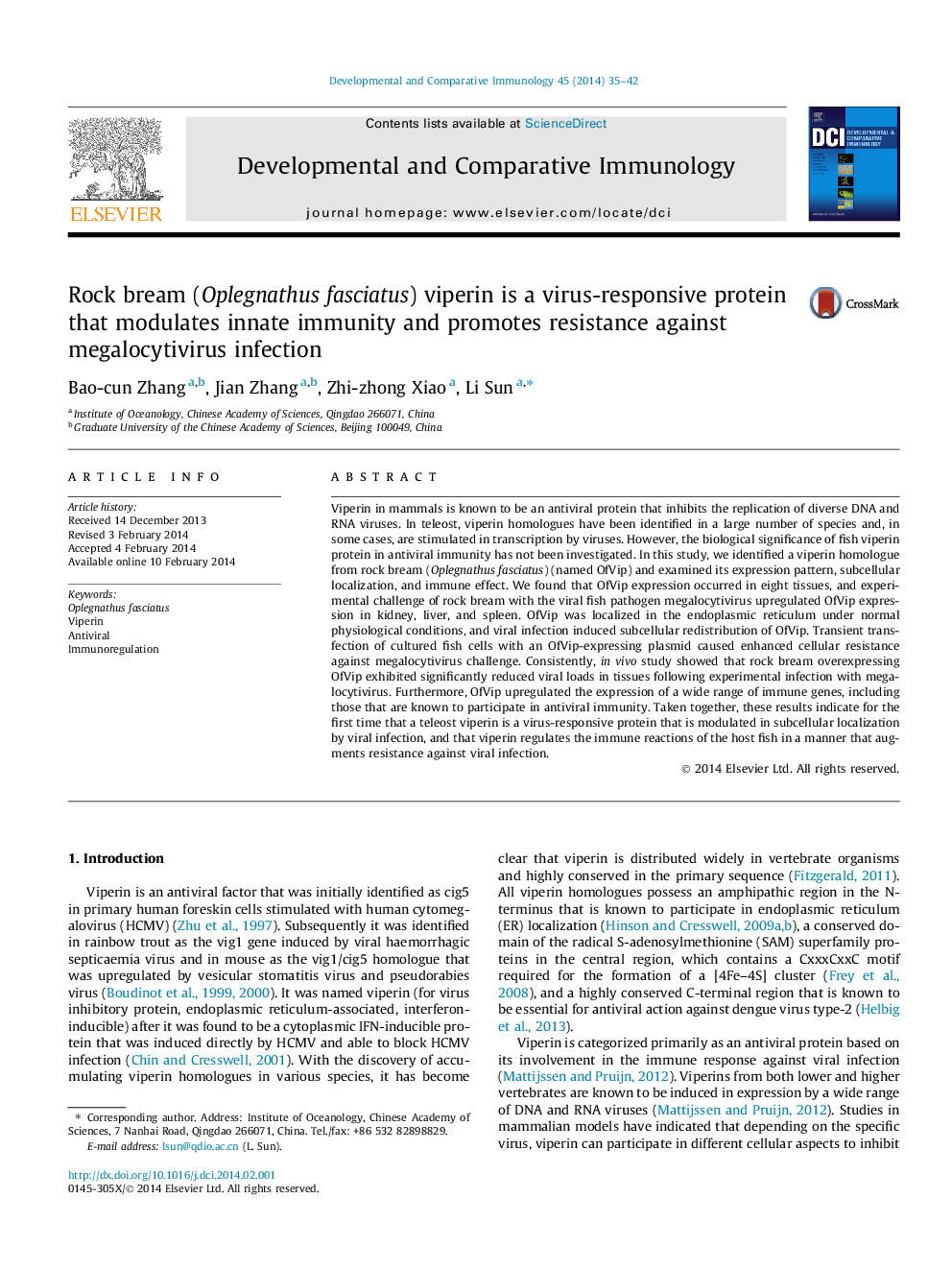| Article ID | Journal | Published Year | Pages | File Type |
|---|---|---|---|---|
| 2429177 | Developmental & Comparative Immunology | 2014 | 8 Pages |
•OfVip was expressed in multiple tissues and induced by megalocytivirus.•OfVip was localized in the endoplasmic reticulum (ER).•Viral infection caused disassociation of OfVip from ER.•OfVip inhibited megalocytivirus infection both in vitro and in vivo.•Overexpression of OfVip upregulated the expression of a wide range immune genes.
Viperin in mammals is known to be an antiviral protein that inhibits the replication of diverse DNA and RNA viruses. In teleost, viperin homologues have been identified in a large number of species and, in some cases, are stimulated in transcription by viruses. However, the biological significance of fish viperin protein in antiviral immunity has not been investigated. In this study, we identified a viperin homologue from rock bream (Oplegnathus fasciatus) (named OfVip) and examined its expression pattern, subcellular localization, and immune effect. We found that OfVip expression occurred in eight tissues, and experimental challenge of rock bream with the viral fish pathogen megalocytivirus upregulated OfVip expression in kidney, liver, and spleen. OfVip was localized in the endoplasmic reticulum under normal physiological conditions, and viral infection induced subcellular redistribution of OfVip. Transient transfection of cultured fish cells with an OfVip-expressing plasmid caused enhanced cellular resistance against megalocytivirus challenge. Consistently, in vivo study showed that rock bream overexpressing OfVip exhibited significantly reduced viral loads in tissues following experimental infection with megalocytivirus. Furthermore, OfVip upregulated the expression of a wide range of immune genes, including those that are known to participate in antiviral immunity. Taken together, these results indicate for the first time that a teleost viperin is a virus-responsive protein that is modulated in subcellular localization by viral infection, and that viperin regulates the immune reactions of the host fish in a manner that augments resistance against viral infection.
